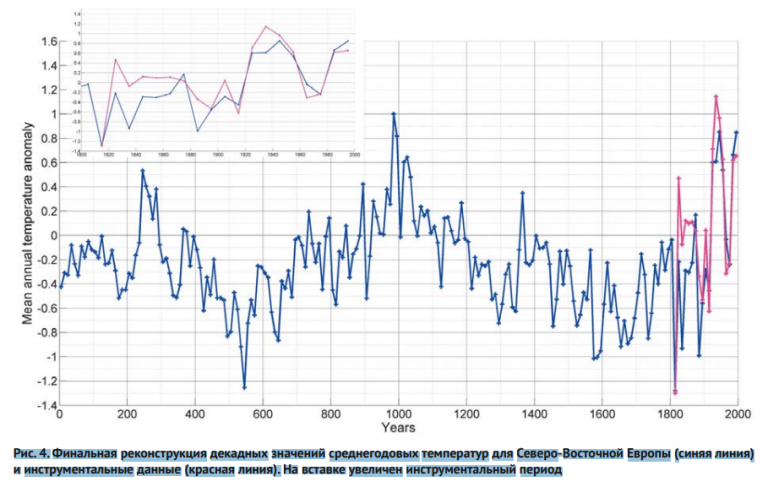.
Dr. Michael E. Mann and the IPCC claims of a hockey stick temperature trend are challenged.
.
A paper published by a team of scientists of the Russian Academy of S... led by В. V. Klimenko presents a quantitative reconstruction of the mean annual temperatures of northeastern Europe for the last two millennia. The study was done in cooperation with the Alexander von Humboldt Foundation (Germany).
.
Result: it was warmer 1000 years ago than it is today.
.
The reconstruction of the mean annual temperatures is based on dendrochronological, palynological and historical information, and shows the comparative chronology of climatic and historical events over a large region of Northeast Europe:
.
Figure 1. Map of the study region showing locations for which indirect climatic data are available.
Yellow circles indicate palynological data, green circles indicate dendrochronological data, and black circles indicate the most important historical evidence. Triangles indicate the location of long-row weather stations in and around the study region: Haparanda (1), Vardø (2), Arkhangelsk (3), Kem (4), Petrozavodsk (5), Malye Karmakuly (6), Salekhard (7), Tobolsk (8), Syktyvkar (9), Turukhansk (10), Tomsk (11), Yeniseysk (12). Source: here.
.
Warmer in the years 981-990 and in mid 20th century
Unlike what papers authored by scientists close to the IPCC like to suggest (a flat temperature mean over the past 1000 years followed by a 20th century hockey stick blade warming),the Russian reconstruction of decadal mean annual temperature values shows major climatic events manifested both on the scale of the entire Northern Hemisphere and in its separate regions.
.
Figure 4. Final reconstruction of decadal mean annual temperatures for Northeast Europe (blue line)
and instrumental data (red line). The instrumental period is enlarged in the inset. Source: here.
.
According to the paper’s abstract:
In the pre-industrial era, the maximum annual mean temperatures in 981-990 were 1°C higher and minimum temperatures in 1811-1820 were 1.3°C lower than on average for 1951-1980. The constructed chronology has a noticeably larger amplitude of variability compared to hemispheric and pan-Arctic reconstructions.”
.
The paper concludes that the results of the reconstruction point to “major climatic events” such as the Roman Optimum, the cold epoch of the Great Migration of Peoples in the 5th and 6th centuries, the Medieval Climatic Optimum of the 10th-12th centuries, and the Little Ice Age (13th-19th centuries).
.
These were manifested both on the scale of the entire Northern Hemisphere, and its individual regions.
Hat-tip: inderwahrheitliegtdiekraft at X.


You need to be a member of Citizens' Task Force on Wind Power - Maine to add comments!
Join Citizens' Task Force on Wind Power - Maine